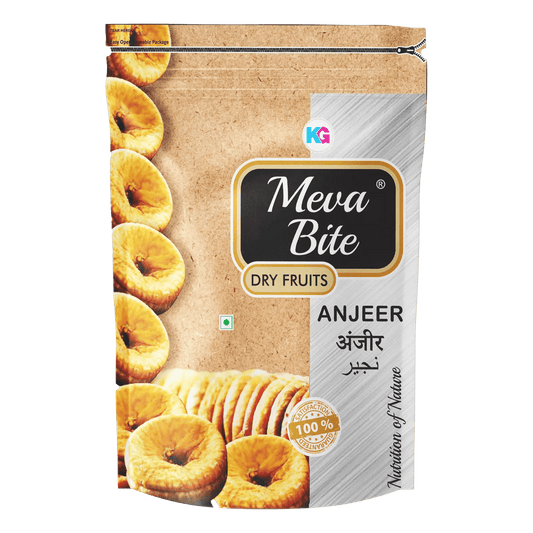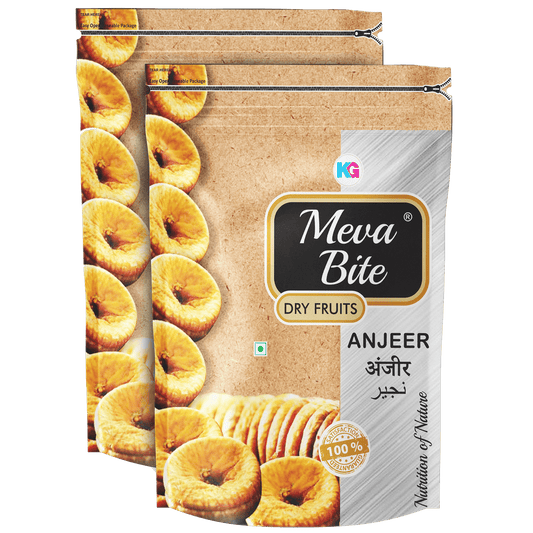1. सूखे मेवे और बीजों के स्वास्थ्य लाभ
कौन से सूखे मेवे और बीज सबसे अधिक स्वास्थ्य लाभ प्रदान करते हैं?
सारांश: बादाम, अखरोट और चिया बीज स्वास्थ्य लाभ की सूची में सबसे ऊपर हैं। वे एंटीऑक्सीडेंट से भरपूर होते हैं, निरंतर ऊर्जा प्रदान करते हैं और पाचन में सहायता करते हैं। ये पावरहाउस समग्र स्वास्थ्य के लिए लाभकारी पोषक तत्वों की एक श्रृंखला प्रदान करते हैं।
विस्तृत उत्तर:
बादाम : विटामिन ई से भरपूर, एक शक्तिशाली एंटीऑक्सीडेंट मैग्नीशियम से भरपूर, ऊर्जा उत्पादन में सहायक पाचन में सुधार के लिए फाइबर से युक्तअखरोट : ओमेगा-3 फैटी एसिड का उत्कृष्ट स्रोत, पॉलीफेनॉल सहित एंटीऑक्सीडेंट से भरपूर, मस्तिष्क स्वास्थ्य और संज्ञानात्मक कार्य का समर्थन करता है
चिया बीज : फाइबर से भरपूर, पाचन स्वास्थ्य को बढ़ावा देते हैं हृदय स्वास्थ्य के लिए ओमेगा-3 फैटी एसिड से भरपूर होते हैं अपने प्रोटीन सामग्री के कारण निरंतर ऊर्जा प्रदान करते हैं
कद्दू के बीज : जिंक से भरपूर, प्रतिरक्षा प्रणाली को सहायता प्रदान करते हैं ऊर्जा उत्पादन के लिए मैग्नीशियम युक्त होते हैं विटामिन ई सहित एंटीऑक्सीडेंट से भरपूर होते हैं
क्या कुछ विशिष्ट सूखे मेवे या बीज कुछ विशेष स्वास्थ्य लक्ष्यों के लिए अच्छे हैं?
सारांश: हां, विशिष्ट सूखे मेवे और बीज अलग-अलग स्वास्थ्य लक्ष्यों को लक्षित करते हैं। बादाम और चिया बीज वजन प्रबंधन में सहायता करते हैं, जबकि ब्राजील नट्स और सूरजमुखी के बीज त्वचा के स्वास्थ्य को बढ़ावा देते हैं। प्रत्येक विभिन्न स्वास्थ्य उद्देश्यों के लिए अद्वितीय लाभ प्रदान करता है।
विस्तृत उत्तर:
वज़न प्रबंधन:बादाम : प्रोटीन और फाइबर से भरपूर, तृप्ति को बढ़ावा देते हैं
चिया बीज : पानी को सोखकर पेट भरे होने का एहसास दिलाते हैं
त्वचा का स्वास्थ्य:
ब्राजील नट्स : सेलेनियम से भरपूर, त्वचा की लोच को बनाए रखता है
सूरजमुखी के बीज : विटामिन ई से भरपूर, त्वचा को ऑक्सीडेटिव तनाव से बचाते हैं
हृदय स्वास्थ्य:
अखरोट : इसमें ओमेगा-3 फैटी एसिड होता है, जो सूजन को कम करता है
अलसी के बीज : इनमें लिग्नान की मात्रा अधिक होती है, जो कोलेस्ट्रॉल को कम करने में सहायक होते हैं
हड्डियों का स्वास्थ्य:
सूखे अंजीर : कैल्शियम और पोटेशियम का अच्छा स्रोत
तिल: कैल्शियम और मैग्नीशियम से भरपूर
पाचन स्वास्थ्य:
आलूबुखारा : फाइबर से भरपूर, नियमित मल त्याग को बढ़ावा देता है
कद्दू के बीज : प्रीबायोटिक्स होते हैं, जो पेट के स्वास्थ्य का समर्थन करते हैं
पोषण मूल्य की दृष्टि से सूखे फल और बीज अपने ताजे समकक्षों से किस प्रकार तुलना करते हैं?
सारांश: सूखे फल और बीज आम तौर पर अपने अधिकांश पोषक तत्वों को बरकरार रखते हैं, अक्सर केंद्रित रूप में। हालांकि, सुखाने की प्रक्रिया के दौरान कुछ विटामिन नष्ट हो सकते हैं। उनमें आम तौर पर ताजे फलों की तुलना में अधिक कैलोरी घनत्व होता है।
विस्तृत उत्तर:
पोषक तत्व सांद्रता: सूखे फलों में पानी निकालने के कारण पोषक तत्व केंद्रित होते हैं। ताजे फलों की तुलना में प्रति सर्विंग उच्च कैलोरी घनत्व होता है। विटामिन सामग्री: सुखाने की प्रक्रिया के दौरान विटामिन सी की कुछ हानि होती है। वसा में घुलनशील विटामिन (ए, डी, ई, के) आमतौर पर अच्छी तरह से संरक्षित होते हैं।
खनिज सामग्री: सूखे फल और बीजों में खनिज बरकरार रहते हैं और अक्सर उनमें संकेन्द्रित होते हैं, विशेष रूप से पोटेशियम, मैग्नीशियम और आयरन अधिक होते हैं, फाइबर सामग्री: सूखे फल और बीज अपनी फाइबर सामग्री को बनाए रखते हैं, अक्सर ताजे फलों की तुलना में प्रति सर्विंग में अधिक फाइबर होता है।
एंटीऑक्सीडेंट स्तर: सुखाने की प्रक्रिया में कई एंटीऑक्सीडेंट संरक्षित रहते हैं, कुछ प्रकारों में एंटीऑक्सीडेंट गतिविधि भी बढ़ सकती है।
2. स्वाद प्रोफाइल और तैयारी
सूखे मेवों और बीजों से मैं किस प्रकार के स्वाद की अपेक्षा कर सकता हूँ?
सारांश: सूखे मेवे और बीज कई तरह के स्वाद देते हैं। किशमिश और खजूर से मीठा स्वाद, क्रैनबेरी से खट्टापन और बादाम और सूरजमुखी के बीजों से पौष्टिकता की उम्मीद करें। बनावट चबाने योग्य से लेकर कुरकुरे तक भिन्न होती है।
विस्तृत उत्तर:
मीठे स्वाद:
किशमिश : सघन अंगूर की मिठास
खजूर : समृद्ध, कारमेल जैसी मिठास
सूखे अंजीर: शहद जैसी मिठास और बीजों से हल्की कुरकुरी महक
तीखा स्वाद:
सूखे क्रैनबेरी : उज्ज्वल, तीखा स्वाद
सूखी खुबानी : मीठा-खट्टा संतुलन
अखरोट जैसा स्वाद:
बादाम : हल्का, मक्खन जैसा स्वाद
अखरोट: गाढ़ा, थोड़ा कड़वा स्वाद
कद्दू के बीज: सूक्ष्म, मिट्टी जैसा स्वाद
अद्वितीय स्वाद:
सूखा आम: चबाने योग्य बनावट के साथ उष्णकटिबंधीय मिठास
चिया बीज: भिगोने पर एक अद्वितीय जेल जैसी बनावट के साथ तटस्थ स्वाद
ब्राजील नट्स: समृद्ध, मलाईदार स्वाद
बनावट प्रोफाइल:
चबाने योग्य: किशमिश और खजूर जैसे सूखे फल
कुरकुरे : अधिकांश मेवे और बीज
नरम : सूखे खुबानी और अंजीर
क्या सूखे मेवों और बीजों को अधिक स्वादिष्ट बनाने के लिए उन्हें तैयार करने या उनमें मसाला डालने के कोई तरीके हैं?
सारांश: हाँ, सूखे मेवों और बीजों को बढ़ाने के कई तरीके हैं। अतिरिक्त कुरकुरापन के लिए नट्स को टोस्ट करके देखें, उन्हें दही या ओटमील में मिलाएँ, या घर पर ही ट्रेल मिक्स बनाएँ। मसालों के साथ सीज़निंग करने से स्वाद में और भी रोमांचकारी आयाम जुड़ सकते हैं।
विस्तृत उत्तर:
टोस्टिंग : यह नट्स और बीजों का स्वाद बढ़ाता है और उन्हें कुरकुरा बनाता है। बादाम या कद्दू के बीजों को सूखे पैन में भूनने का प्रयास करें।
अन्य खाद्य पदार्थों में मिलाना : बनावट और प्राकृतिक मिठास के लिए दही में मिलाएं। दलिया या नाश्ते के अनाज में शामिल करें। सलाद या भुनी हुई सब्जियों के लिए टॉपिंग के रूप में उपयोग करें।
ट्रेल मिक्स बनाना : विभिन्न नट्स, बीज और सूखे मेवों को मिलाएं, स्वाद के लिए डार्क चॉकलेट चिप्स मिलाएं, वसाबी मटर जैसी स्वादिष्ट चीजों के साथ प्रयोग करें
मसाला : दालचीनी, जीरा या स्मोक्ड पेपरिका जैसे मसालों के साथ नट्स को मिलाएं मेपल-रोज़मेरी बादाम जैसे मीठे-नमकीन कॉम्बो बनाएं
बेकिंग और खाना पकाना : मफिन, कुकीज़, या ग्रेनोला बार जैसे बेक्ड सामान में उपयोग करें पिलाफ या स्टफिंग जैसे स्वादिष्ट व्यंजनों में शामिल करें
निष्कर्ष
सूखे मेवे और बीज पोषण से भरपूर होते हैं और ये हृदय स्वास्थ्य से लेकर वजन कम करने में मदद करने तक कई तरह के स्वास्थ्य लाभ प्रदान करते हैं। अपने विविध स्वाद और बनावट के साथ, इन्हें कई तरह से खाया जा सकता है, साधारण नाश्ते से लेकर जटिल व्यंजनों में शामिल करने तक। उनकी गुणवत्ता और पोषण मूल्य को बनाए रखने के लिए उचित भंडारण महत्वपूर्ण है। चाहे आप जैविक या पारंपरिक चुनें, महत्वपूर्ण बात यह है कि प्रतिष्ठित स्रोतों से उच्च गुणवत्ता वाले उत्पादों का चयन करें। अपने आहार में विभिन्न प्रकार के सूखे मेवे और बीज शामिल करके, आप उनके अनूठे स्वाद का आनंद ले सकते हैं और साथ ही उनके कई स्वास्थ्य लाभ भी उठा सकते हैं।






